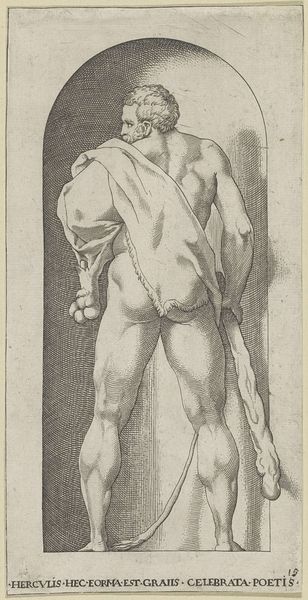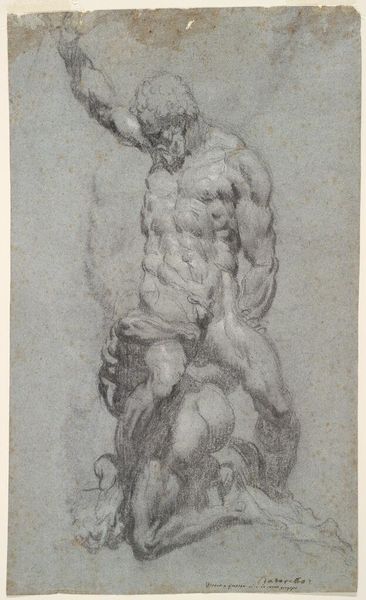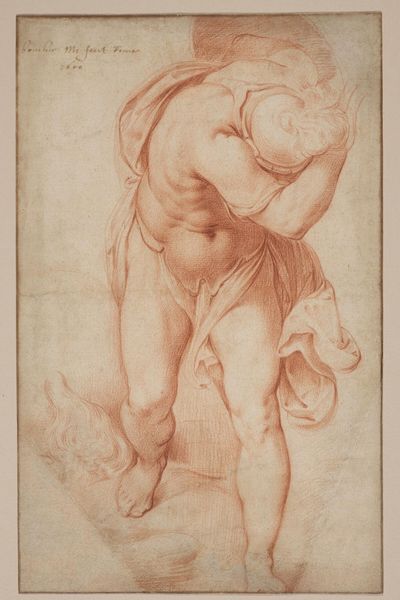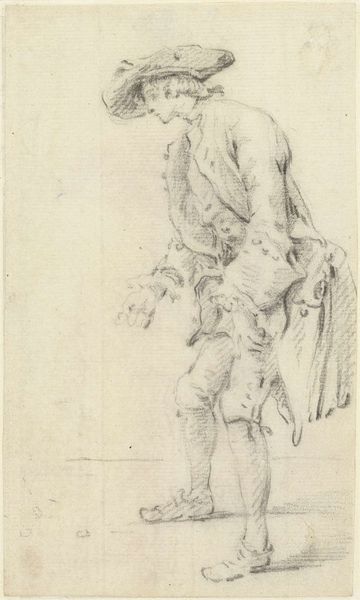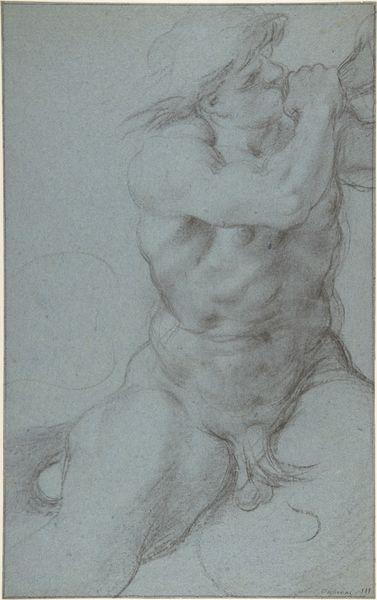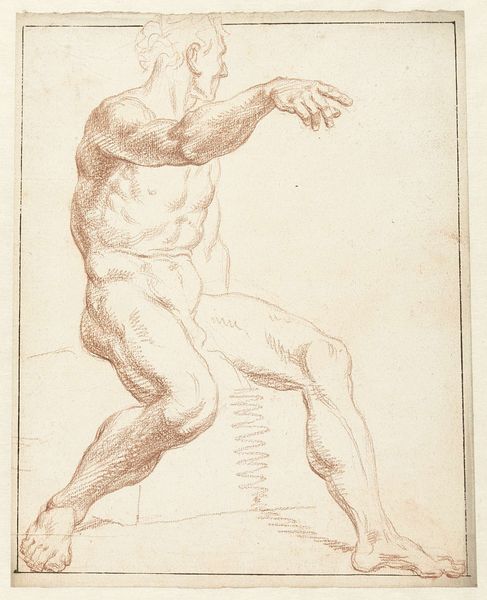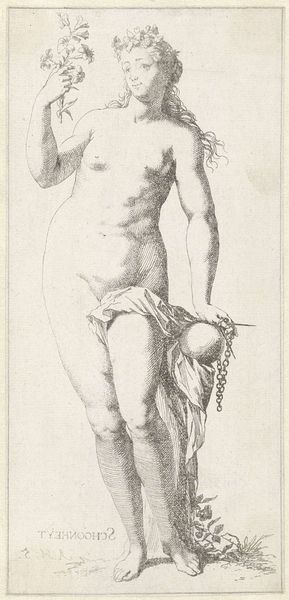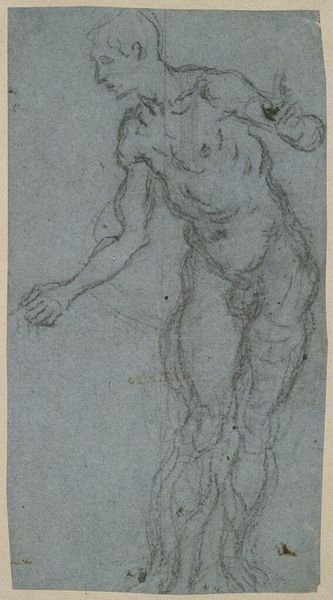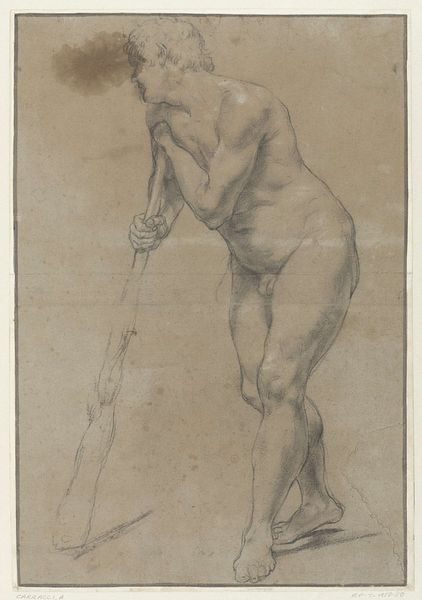
drawing, pencil
#
pencil drawn
#
drawing
#
charcoal drawing
#
mannerism
#
figuration
#
pencil drawing
#
pencil
#
nude
Dimensions: height 341 mm, width 194 mm
Copyright: Rijks Museum: Open Domain
Pellegrino Tibaldi made this drawing of a soldier with pen and brown ink around the mid-16th century. The Italian Renaissance saw a renewed interest in classical antiquity, and artists looked to ancient sculptures for inspiration. In this drawing, Tibaldi demonstrates his mastery of anatomy and his ability to depict the human form in a dynamic pose, something he learned from classical examples. Italy at this time was a complex web of city-states, each with its own political and economic interests. Powerful families like the Medici in Florence and the papacy in Rome played significant roles in shaping artistic patronage and cultural trends. The Catholic Church, in particular, was a major patron of the arts, commissioning works that promoted its religious and political agenda, so it’s worth asking who commissioned this drawing and for what purpose. To fully understand this work, we might investigate the network of patrons, artists, and intellectuals that shaped Tibaldi's career. Researching these types of institutional histories can help us to see more clearly the social conditions that shape artistic production.
Comments
No comments
Be the first to comment and join the conversation on the ultimate creative platform.

